 | |
A Stage Full of Talent at Once: Bob Dylan, George Harrison, Neil Young, Roger McGuinn, Tom Petty, Eric Clapton - My Back Pages
|
|

NEW CCDS Pamphlet
on Climate Change.
|
Blog of the Week...

|

New CCDS Book Reporting on Vietnam
|
|
Radical Jesus:
A Graphic History of Faith 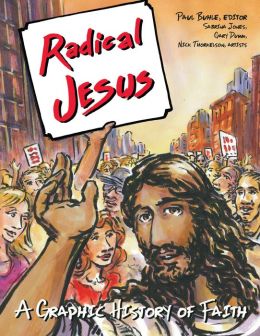 By Paul BuhleHerald Press By Paul BuhleHerald Press
|

Want to Know what CCDS has
been doing...Check it Out!
|
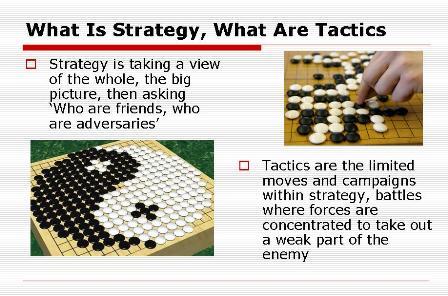 Keep On Keepin' On Keep On Keepin' OnHating the 'Middle Class,' Why Socialists Run in Elections, Strategy and Tactics Slide Slow, Class and Privilege, the Green New Deal ...and other Short Posts on Tumblr by Carl Davidson
|

Edited by Carl Davidson Revolutionary Youth and the New Working Class: The Praxis Papers, the Port Authority Statement, the RYM Documents and other Lost Writings of SDS Changemaker, 273pp, $22.50
For the full contents, click the link and view 'Preview' under the cover graphic.
|
 The new annual edition of our journal of discussion and analysis is now out. More than 170 pages, it includes 14 articles on strategy austerity, organizing, and the right. Cost is $10 plus shipping. Or get one by becoming a sustainer. Click the title to buy it directly. The new annual edition of our journal of discussion and analysis is now out. More than 170 pages, it includes 14 articles on strategy austerity, organizing, and the right. Cost is $10 plus shipping. Or get one by becoming a sustainer. Click the title to buy it directly.
|
|
By Randy Shannon, CCDS

"Everyone has the right to work, to free of employment, to just and favorable conditions of work and to protection against unemployment."
- United Nations Universal Declaration of Human Rights, December 10, 1948
I. Introduction
The "Great Recession" that began in 2007 has caused the greatest percent of job losses since the Great Depression of 1929. This crisis is the end of an era of unrestrained 'neo-liberal' capitalism that became public policy during the Reagan administration. The crisis marks a new level of instability with the growth of a global financial elite that targeted US workers and our trade unions after World War II.
|
|
Order Our
Full Employment Booklets
 |
...In a new and updated 2nd Edition
Capitalism may well collapse under its own excesses, but what would one propose to replace it? Margaret Thatcher's mantra was TINA...There Is No Alternative. David Schweickart's vision of "Economic Democracy" proposes a serious alternative. Even more fundamentally, it opens the door to thinking about alternatives. His may or may not turn out to be the definitive "successor system," but he is a leader in breaking out of the box. |
 by Paul KrehbielAutumn Leaf Press, $25.64
by Paul KrehbielAutumn Leaf Press, $25.64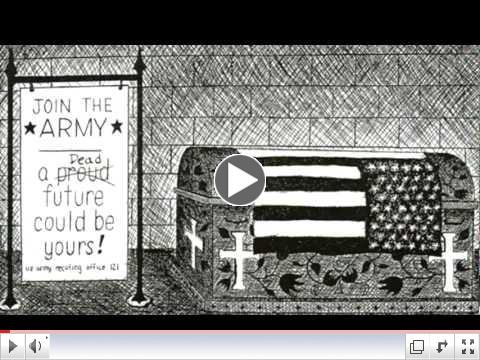 | | Shades of Justice Video: Bringing Down a President, Ending a War |
|
 By Giuseppe Fiori
Verso, 30 pages
|

Essays on Mondragon, Marx, Gramsci
and the Green and Solidarity Economies |

- Foreword by Susan Brownmiller
- Preface by Ken Wachsberger
$37.50 + $6 shipping
|
|
Discussion Documents for a Militant Movement
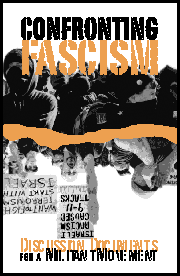
By Don Hamerquist
|
|
|
|
An Invitation to CCDSers and Friends...
 Can We Put A Can We Put A
Green Energy
Majority
in Power?
We're the Committees of Correspondence for Democracy and Socialism...Do you have friends who should see this? Pass it on...Do you have a blog of your own? Others you love to read every day? Well, this is a place where you can share access to them with the rest of your comrades. Just pick your greatest hits for the week and send them to us at carld717@gmail.com! Most of all, it's urgent that you support low-wage workers, oppose militarized police, the war on Gaza, defend voter rights, plan for 2014 races now, oppose austerity, support the 'Moral Mondays' in North Carolina, the fight for the Green New Deal, a just immigration policy and the Congressional Progressive Caucus' 'Back to Work Budget'! We're doing more than ever, and have big plans. So pay your dues, make a donation and become a sustainer. Do it Now! Check the link at the bottom... |
NYC: Connecting Capitalism to Climate Crisis

By Matt Surrusco Truthout
Sept 22, 2014 - The largest climate march in history, which saw some 310,000 people channeled through New York City streets, according to organizers, brought hundreds of environmental organizations and advocacy groups under the umbrella of the People's Climate March on September 21.
In the run-up to the march, some critics argued that in order for the coalition to incorporate so many people it had to become apolitical. The march lacked a clear message and had the markings of a corporate PR campaign, some said.
But on Sunday, along the four-mile march route, cordoned off by New York City Police Department officers and barricades, individual activists and organizations made a point, with visuals and chants, to tie climate disruption to those seen as most responsible - major corporations, the financial industry and the governments that allow them to pollute with impunity.
Signs read "Capitalism is killing the planet" and featured messages that promoted divesting from fossil fuel companies, investing in wind, solar and other alternative energy sources, and remaking the global economy to promote justice and sustainability. Some marchers called out the corporate connection more directly: "ExxonMobil, BP, Shell, send those bastards back to hell!"
Mcnair Scott, a Brooklyn-based organizer, said that while the march mobilized the masses and had a general message to take action on climate change, a smaller, targeted event planned for Monday would connect global warming back "to the villains of the climate crisis."
On Monday, organizers, many affiliated with the Occupy movement, planned to "flood Wall Street" with hundreds of activists calling for an economy that protects people and the environment over corporations and profits. The direct action will include acts of civil disobedience, including a sit-in, organizers said. "It's a continued focus on the perpetrators," Scott told Truthout. "Now is the time we can bring this [economic analysis of the climate issue] into people's consciousness."
"Today is huge," said Jack Boyle, a native New Yorker and Occupy veteran, referring to the hundreds of thousands of people who attended the climate march. "Tomorrow is speaking directly to Wall Street."
The climate march, attendees told Truthout, was focused on bringing out the masses and showing national and world leaders that there is a huge constituency passionate about addressing climate change with real solutions, now.
"It sends a message to leaders around the world that there are a lot of people who will support them," said Paul Emile Anders, of Massachusetts, with an organization called Feisty Doves, which advocates for the use of nonviolent action to protect the climate. He said the march - a potential "tipping point for the environmental movement" - would also be a rally call for other, direct actions - like the Wall Street sit-in on Monday.
The People's Climate March host committee adopted a code of conduct in July, in part, to "encourage the broadest and most diverse involvement possible," and "to help create a family-friendly mobilization."
The march included a diverse mass, of all ages. From high school and college students to veterans, beekeepers to bicyclists, hardcore activists and organizers to liberal Democrats, the message most stressed was an old one for the environmental movement: We must band together to protect the environment for the sake of future generations.
"We want our kids to inherit something that isn't trashed," said Christine Cimini, who traveled to New York City from Vermont with her wife, two children and friends to attend the march.
"It would be so scary to die like a polar bear," 8-year-old Chloe West, Cimini's daughter, told Truthout. "The food chain can begin again, but the earth can't."...(Click title for more)
|
|

Suzanne Goldenberg and Lauren Gambino
The Guardian via Portside
Sept 22, 2014 - More than 300,000 marchers flooded the streets of New York on Sunday in the largest climate change march in history, vaulting the environmental threat to the top of the global agenda.
On a day of 2,700 simultaneous climate events from Melbourne to Manhattan, the US secretary of state, John Kerry, reinforced the calls from the streets for action by calling on world leaders to take the threat of climate change as seriously as Isis or Ebola.
Organisers had called the day of protests in order to put pressure on world leaders gathering in New York for a UN summit on climate change on Tuesday. It will be the leaders' first such meeting in five years.
Kerry, in remarks to foreign ministers of the 20 biggest economies, said climate change should be at the top of the agenda despite competition from more immediate challenges.
"While we are confronting [Isis], and we are confronting terrorism and we are confronting Ebola, this also has an immediacy that people have come to understand," he said. "There is a long list of important issues before all of us, but the grave threat that climate change poses warrants a prominent position on that list."
Organisers claimed 570,000 people protested in 161 countries, from a handful of protesters in Aleppo, Syria, to the mega-march by 310,000 through New York City - three times as many as the 100,000 people organisers had expected, and easily overtaking the 80,000 who demonstrated for climate action in Copenhagen in 2009.
In Manhattan, the noisy, hopeful cavalcade of protesters - led by Hurricane Sandy survivors carrying placards of sunflowers and Native Americans in traditional headdresses - took over the streets of Midtown, juggling, singing, blowing synagogue shofars and conch shells, whistling and beating drums, with biodiesel-powered floats chugging along...
In London, organisers said 40,000 took to the sunlit streets and marched to the Houses of Parliament. The protest was peaceful, although loud jeers rose up as the crowd passed both Downing Street and the Department of Energy and Climate Change.
In Melbourne, protesters paraded a giant puppet of the Australian prime minister, Tony Abbott.
The People's Climate March came two days before the US president, Barack Obama, and about 120 other world leaders gather for the UN meeting on climate change.
The challenge for those leaders is clear: left unchecked, the world is on course for a 4.5C temperature rise. "For us that means annihilation," said Tony deBrum, the foreign minister of the Marshall Islands.
Annual carbon dioxide emissions rose 2.5% over last year, a new study found at the weekend. At those rates, that means the global "carbon budget" - the amount governments can afford to emit without triggering catastrophic change - is likely to be used up within just 30 years.
The US National Oceanic and Atmospheric Administration announced last week that June, July, and August were the hottest months on record and that 2014 was on course to break the record for hottest year, which was set in 2010.
But the agenda for Tuesday's gathering is uncertain. The UN has said repeatedly the gathering is not a negotiation. That will take place in Lima in two months' time, when diplomats will enter the final stretch of long and difficult negotiations aimed at reaching an international agreement to cut the greenhouse gases that cause climate change, by the time they meet in late 2015 in Paris....(Click title for more)
|
By Harry Enten
FiveThirtyEight.com
Sept 23, 2014 - Before the big climate march in New York on Sunday, New York magazine's Tim Murphy asked, "Can Sunday's climate march expand the movement beyond wonky white men?"
After the march, Sally Kohn at The Daily Beast had an answer: Yes.
But zoom out beyond the march's organizers and participants, and you'll see the portion of the American public in favor of action to combat climate change has long been diverse. Since 2007, Pew Research Center has asked people what areas, including global warming, should be a top priority for the president and Congress. Given the talk about the need for diversity in the global warming movement, you might expect that the people who say fighting global warming should a top priority would be overwhelmingly white. You'd be wrong.

Every time the question has been asked, a lower percentage of whites have said it should be a top priority than non-whites. In fact, the gap between whites and non-whites has widened. The share of non-whites viewing climate change as a top priority hasn't changed much; that same share of whites, meanwhile, has dropped more than 10 percentage points.
Is this just a partisan thing (i.e. Democrats are more in favor of the government developing a plan to combat global warming, and more minorities are Democrats)? This makes sense, but the racial gap exists even when controlling for political party.

White Democrats have less of a desire for the government to immediately deal with global warming than non-white Democrats. Since 2007, an average of 50 percent of non-white Democrats think it should be a top priority compared to just 37 percent of white Democrats. Like with Americans overall, the difference between white and non-white Democrats is wider now than it was in 2007 and 2008.
The average percentage of white Democrats who prioritize fighting global warming is down from an average 46 percent in 2007 and 2008 to 35 percent since 2013. The average percentage of non-white Democrats is also down, but only from 52 percent to 47 percent in the same period. (Note: I'm using an average of two years because individual years have relatively small subsample sizes.) The percentage-point drop among white Democrats is more than twice that of non-white Democrats. As with Americans overall, it is whites who are more responsible for the widening racial gaps on global-warming priority among Democrats.
It seems clear from the polling that whites are more skeptical of the need for government intervention on global warming than non-whites. If the leaders of climate-change movement are overwhelmingly white, then they are not representative of the larger the slice of the public most sympathetic to their cause....(Click title for more)
|
|
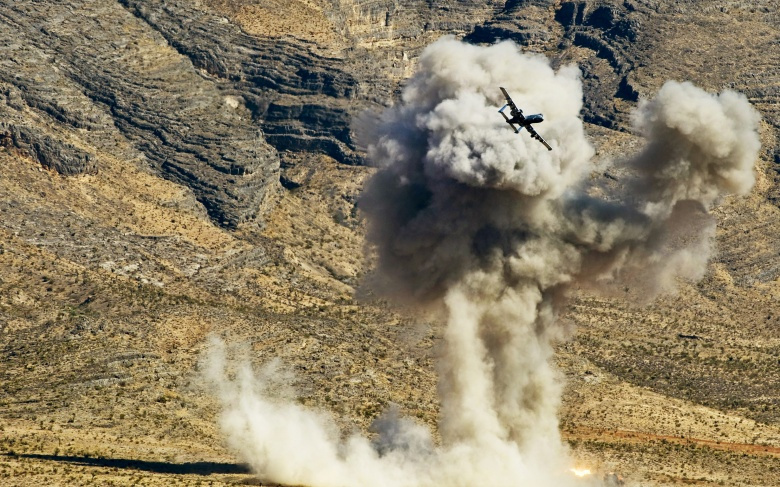
By William Greider
The Nation via Portside
Sept 23, 3014 - Do not be misled by White House double-talk: the United States is embarking on another Long War in the Middle East.
This one will belong to Barack Obama, and it may extend beyond his presidency. Secretary of State John Kerry said as much. "It may take a year. It may take two years. It may take three years. But we're determined it has to happen," Kerry vowed.
Actually, it may take ten years, or longer. Americans have heard this bold, brave talk before. It has led to costly failure for our country and horrendous losses for humanity.
The United States went to war in Afghanistan in 2001 and finally intends to withdraw in 2016-making it the longest war in US history. The Taliban, though, are almost as strong as ever, merely waiting for US troops to leave. Washington launched its unprovoked war of aggression against Iraq in 2003, conquered the country and installed a new government, but troops were not withdrawn until the end of 2011. Now Iraq's civil war has reignited, only on a much broader front that includes the devastating civil war next door in Syria. Fight we must, Obama says. It's as if we've learned nothing from our post-9/11 failures.
If Americans step back from bitter recriminations, they may be able to recognize an impossible pattern, in which we are caught in a trap of our own making.
When the Cold War ended a quarter-century ago, US presidents and policy-makers embraced the role of indispensable Goliath: America would use its overwhelming military supremacy to maintain world order. Americans like to see themselves as good guys, but lots of other people do not share that view. To many, the United States looks like an arrogant bully, a last bastion of colonialism. Furthermore, America's claim of injured innocence has been deeply damaged by its war-fighting tactics, most obviously in its torture of prisoners.
The failure of US interventions is practical, however, as much as it is moral. Because our armed forces can bomb the bejesus out of anyone on the planet, our strategists have encouraged the false notion that US air power can fight and win wars in which the enemy does all the dying. But guerrilla forces and terrorists have understood for decades that they can destabilize Goliath with steady shocks and surprises (roadside bombs, irregular fighting forces). The greatest shock of all was 9/11, which sowed deep fright in the United States and still has governing elites confused and off-balance.
We have all the best weapons, but the jihadists know we can defeat them on the battlefield and still lose the war. They just have to keep bleeding the United States until it grows weary of the fight and wants out. One alternative for the superpower is to impose industrial-strength devastation upon the weaker opponent. That's what we attempted in Vietnam, but our massive firepower did not deliver "peace with honor," as Richard Nixon promised. It yielded only international outrage, millions of dead Vietnamese-and American defeat.
|
2014 and the GOP: When in Doubt, Run
Against the Kenyan Muslim Socialist

By Greg Sargent
Washington Post
Sept 24, 2014 - Yesterday, Senator Pat Roberts - who has emerged as one of the most closely watched incumbents in the country, now that independent Greg Orman's challenge to him could dictate who controls the Senate - raised a lot of eyebrows when he said this:
"We have to change course because our country is heading for national socialism. That's not right. It's changing our culture. It's changing what we're all about."
National socialism? Philip Rucker, in a great piece on the Kansas race, asks Senator Roberts what he meant, and gets this:
When a reporter asked whether he truly thinks the president is a socialist, Roberts replied, "I believe that the direction he is heading the country is more like a European socialistic state, yes. You can't tell me anything that he has not tried to nationalize."
Interestingly, the Orman campaign is criticizing Roberts' rhetoric. In a statement, the campaign said:
"This is exactly the kind of inflammatory rhetoric that dominates the partisan debate in Washington and that Kansans are tired of. Washington is broken because politicians like Senator Roberts are too busy using scare tactics and calling each other names instead of getting things done. Kansans know we've got to do things differently, and that's why they're supporting businessman Greg Orman's independent campaign for Senate."
This is noteworthy, given that you'd think calling Obama a socialist could not possibly be problematic in any way in deep red Kansas.
By the way, the claim that Obama is moving the country towards socialism has long been echoed by many leading Republicans. It's a way to feed the base's worst fears about Obama while not quite coming out and calling him a socialist, which sounds crazy. In accusing Obama of wanting to "nationalize," well, the entire private sector, Senator Roberts has dispensed with such restraint.
This gets to something interesting about this race. Roberts and his allies in the national GOP, panicked about the Orman challenge and its implications for Senate control, are quickly gearing up an All-About-Obummer campaign. Roberts is up with an ad ripping Orman for donating to Obama and national Democrats, and for saying repeal of Obamacare is unrealistic. A GOP Super PAC is airing a similarly themed spot. (Republicans are also tarring Orman as a shady businessman, but tying him to Obama and national Democrats will figure heavily.)...(Click title for more)
|
By Harry Targ
Diary of a Heartland Radical
America is facing an economic, political, moral, and environmental crisis as deep as any since the Civil War. Extremists have mobilized money and power to increase the concentration of wealth, decrease economic justice, promote war abroad and police violence at home, expand racism, sexism, and exploitation, and end all efforts to protect the fragile environment.
Enormous amounts of money, largely provided by the Koch Brothers but also coming from some of the largest corporations in the country (insurance, energy, drugs, investment, water and on-line), created the American Legislative Exchange Council (ALEC) in the 1970s. Billionaires David and Charles Koch have used their money to transform American politics primarily at the level of state governments. Their father, Fred Koch, was a co-founder of the infamous John Birch Society of the 1950s and 1960s that railed against alleged "communists" such as former President Eisenhower and Supreme Court Chief Justice Earl Warren.
ALEC has created think tanks, funded political candidates who support their extremist agenda, prepared detailed legislative programs on every public policy issue, and held conferences to recruit and curry the favor of state legislators. This forty year semi-secret movement has led to the capture of thirty state governments (governorships and state legislatures). Since 2010 these state governments have launched an assault on workers, women, people of color, and youth.
In Indiana, at least 16 state representatives and 9 state senators have had ties to ALEC. Former Governor Mitch Daniels and his successor Mike Pence have attended and/or spoken at ALEC and other Koch Brothers events.
As a result of ALEC, sustained assaults on the well-being of Hoosiers since 2004 have included: the decertification of public employee unions, the passage of right-to-work legislation, the creation of charter schools, the shift of educational resources from public schools to private ones through the establishment of vouchers. Also attempts were made to privatize welfare services and some Indiana toll roads were leased to foreign corporations. In addition Indiana politicians have promoted laws limiting the ability of Planned Parenthood to provide health examinations to poor women and blocked any regulations on coal power plants particularly adjacent to minority communities. Indiana initiated some of the first voter ID laws in the country making it more difficult for Hoosiers to vote and the current Governor decided not to expand Medicaid. (see Bryan K Bullock, "the Ultra-Right-Wing State Nobody Mentions," Truthout, July 1, 2014).
These long-term trends in various states have sparked the emergence of resistance. One form of resistance is the Moral Mondays movement which began in North Carolina and has spread all across the South and in parts of the Midwest. North Carolina's movement was convened by the NAACP in 2006 to start a conversation about political and economic justice. By 2013, North Carolina's movement grew from 16 organizational partners to over 150. Activists began a weekly protest against the North Carolina legislature's extreme agenda and during the spring legislative season over 1,000 workers, ministers, men, women, minorities, educators, health care professionals, fast food workers, and others were arrested for civil disobedience in the North Carolina State House. Most of the arrests have just been declared unconstitutional.
Rev. William Barber, president of the North Carolina NAACP, has emerged as a powerful spokesperson for the Moral Mondays movement. He articulates the view that the country is in the midst of the third reconstruction. The first, after the Civil War, brought former Black slaves and white workers together to write democratic state constitutions. They practiced a "fusion" politics;" that is working to unite people around shared issues and values and unity around race, gender, faith traditions, and the common passion for building a real democracy.
Barber reports that the fusion movement of the 1860s and 1870s was destroyed by Klan extremism and rightwing plantation supporters of the old slave system. The second reconstruction emerged in the 1950s after Brown vs. Board of Education and succumbed to a new round of extremism resulting from candidate Richard Nixon's "Southern Strategy" of the 1968 election season.
Now, Barber says we are in the midst of a third reconstruction. Moral Mondays movements in North Carolina, and 13 other states in the South and Midwest have begun to build a new fusion movement that draws together workers, women, young and old, black, brown, and white people, documented and undocumented, environmentalists, people of faith and atheists, and the LBGT community based upon "moral" and "constitutional" agendas. He argues that whatever an individual's personal religious or political values, most people hold to a moral core that addresses economic justice and freedom. And, the federal and most state constitutions clearly state their commitment to democracy and justice. The moral and constitutional dimensions are not, he says, about political parties or ideologies but about these fundamental traditions....(Click title for more)
|

Mississippi, 1959. Photo by Harvey Richards. Rifle Hangs on the Wall
Was Reconstruction a Success or Failure?
...And Why It Matters
By Paul Richards PhD
Estuary Press
Part 1: The Civil Rights Movement and Guns
Sept 24, 2014 - Charles E. Cobb, Jr. has told an amazing story about how armed self defense helped make the civil rights movement of the 1960s successful.
His book, This Nonviolent Stuff'll Get You Killed, wrestles with the tension between the non-violent approach of the civil rights movement, including the Student Non-violent Coordinating Committee (SNCC) and the need for armed self defense in the black communities of the south.
For Cobb, non-violence was just a tactic made necessary by the ugly realities of the segregated south. It was not a Gandhian crusade. SNCC's acceptance of armed self defense inside black communities they were trying to organize helped keep the organizers alive.
As I read his story of the armed black communities, a question rose up in my mind. Why didn't the ending of Reconstruction in 1877 result in the disarming of the black population? How could all those guns (and the right to bear them) have stayed in place all those years in a population that was being systematically suppressed? Guns did not get confiscated. Pretty remarkable. Almost a miracle.
Take, for instance, Cobb's story about Mr. Joe, a black Mississippi sharecropper in his 70's who gave shelter to Cobb and other civil rights workers in the 1960s. One morning shortly after Cobb arrived, the local sheriff raided Mr. Joe's farm. During the illegal search of the house, the sheriff confiscated Mr. Joe's shot gun. After the sheriff left, the organizers told Mr. Joe, who was illiterate, that he had a right to his gun because it was guaranteed him in the constitution, which was in this book they held up to show him. A little while later, the organizers found that Mr. Joe and the book were gone. Joe had gone to the sheriff's office to demand the return of his shot gun. He walked alone into the sheriff's office and told him he had come to get his gun back. The sheriff said no, he couldn't have it. Joe held up the book and said he had a right to that gun because it said so in this book. And the sheriff gave him back his shotgun.
Just when everyone back at the farm was beginning to worry about having encouraged Mr. Joe with stories about a book with laws in it, and was about to go searching for him, he returned to his farm with his shotgun in hand, his arms raised over his head in triumph. Everyone was relieved and amazed. How could this happen? It doesn't fit the image of the armed segregationists looming over the meek nonviolent crusaders. It was a small moment of triumph that caused amazement, and gave everyone who witnessed it a glimpse of the sometimes mysterious power which the movement had at its disposal.
Not only did the black community hold on to their guns during even the grimmest years of racial segregation and violence, but white southerners seemed to be operating under the assumption that the right to bear arms transcended segregation. Could this be true? The search for answers takes us back into the period we know as Reconstruction, 1865 to 1877.
Cobb says "Reconstruction did not fail; it was destroyed." He reviews the history of that period (1860-1877) recounting the role of blacks in the Civil War and Reconstruction and the violent rise of segregation and lynchings all over the south after 1877. "Redemption", as our history books call the brutal ending of Reconstruction, gave rise to the New South and its separate but equal fiction that lasted all the way until it was rejected by the famous1954 Supreme Court decision "Brown vs. the Board of Education." ...(Click title for more)
|

The singer has had better songs, but his new record captures his ideas more clearly than ever
By Liel Leibovitz
Tablet
Sept 19, 2014 - Imagine, for just one perfect moment, that you are Leonard Cohen. After an inconvenient brush with financial ruin, you are required to emerge from a decades-long retreat-some of it spent in the austere auspices of the Mount Baldy Zen Center outside of Los Angeles-and go on tour. You retake the stage reluctantly but soon seem to discover within yourself a facility for performance that has eluded you for four decades.
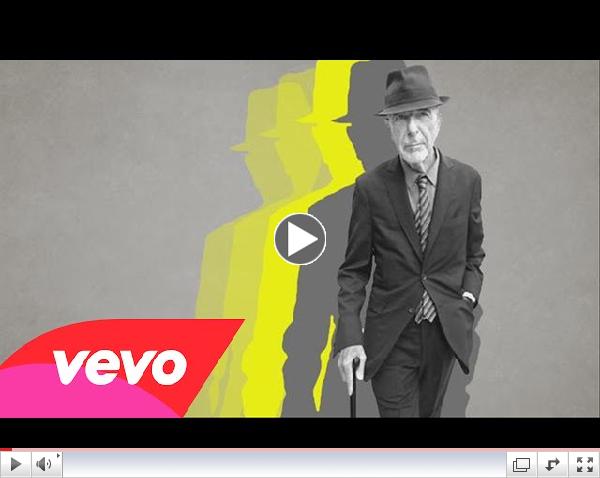 | | Leonard Cohen - Almost Like the Blues (Lyric) |
Maybe it's because you've finally come to terms with the act of standing before hordes of strangers each night and sharing intimate poems meant for individual women with names like Suzanne or Marianne. Now your voice is deeper and your spirit calmer, having finally completed, as you had so eloquently put it, your manual for living with defeat. It's a line from a song, of course, and it's a very fine one. You include it on your 2012 release, Old Ideas, your first album in nearly a decade. It climbs nimbly up the American charts and stops at No. 3, an overwhelming 60 spots above your career's best-performing record to date, which was released in 1969. In other words, you're almost 80, and you are more celebrated and comfortable, perhaps, than you've ever been in your life. Here's the question: What now?
It's a metaphysical problem, really, or even nearly a Zen koan: The stories that we tell ourselves are always about becoming, never about being. We follow our heroes as they struggle and as they suffer and as they triumph, but once they've slipped into a life of small joys, we close the book on them. Even our most introspective artists do the same: Burden them with success, and it's almost guaranteed that their next project will feel strangely hollow. How much rage, after all, could a content and well-compensated Eminem really produce? How many of Kurt Cobain's existential anxieties could survive his elevation to the rock pantheon? If you're Leonard Cohen, then, chances are that you, too, are at risk of ending your period of grace with an album that fizzles when it ought to shine.
Take it as just another sign of Cohen's singularity, then, that his new album, which will be released next week, shows absolutely no sign of the aforementioned symptoms. Because the usual platitudes-a masterpiece! his best yet!-slip right off of an artist who had spent half a century deftly resisting other people's attempts at definitions, think of the new album, Popular Problems, as dawn on Mount Baldy, inviting you into a sparsely decorated landscape that nonetheless gives you all the discipline and all the space you need to contemplate the questions that are truly worth considering.
Here he is, for example, in "Almost Like the Blues," reciting over a piano track that manages to be at once sober and seductive: "So I let my heart get frozen /To keep away the rot /My father said I'm chosen /My mother said I'm not /I listened to their story /Of the Gypsies and the Jews /It was good, it wasn't boring /It was almost like the blues."
It is, first and foremost, a funny line: Is Cohen chosen? Depends on which of his parents you ask. But if it's a joke, it's a cosmic one: The very nature of chosenness, the spiritual engine of Judaism for millennia now, is that our seminal moment at the foothills of the mountain came with no instructions. Who's chosen? For what? For how long? Can we be unchosen? Are our children chosen by default? God never says, leaving us to wonder for eternity what it means to have been chosen. In the meantime, all we can do is guess and make up stories-and songs-that are good, that aren't boring, and that come as close as is possible to the pure emotional convictions of something like the blues, as transcendental an art form as we've got.
|
|
Keep up with the Moral Mondays with a Red Resolution...
Become a CCDS member today!
 The time is long past for 'Lone Rangers'. Being a socialist by your self is no fun and doesn't help much. Join CCDS today--$36 regular, $48 household and $18 youth. The time is long past for 'Lone Rangers'. Being a socialist by your self is no fun and doesn't help much. Join CCDS today--$36 regular, $48 household and $18 youth.
Better yet, beome a sustainer at $20 per month, and we'll send you a copy of Jack O'Dell's new book, 'Climbing Jacobs Ladder,' drawing on the lessons of the movement in the South in the 1950s and 1960s.
Solidarity, Carl Davidson, CCDS
|
|
|